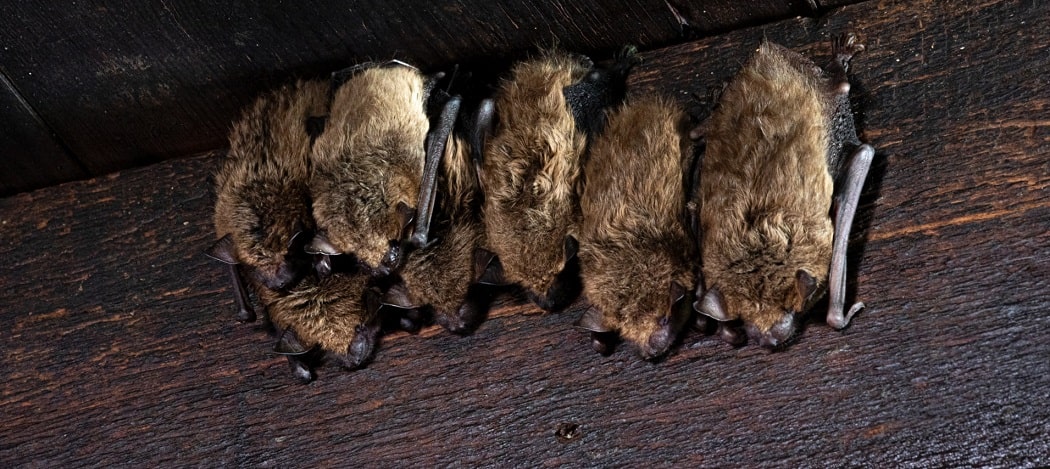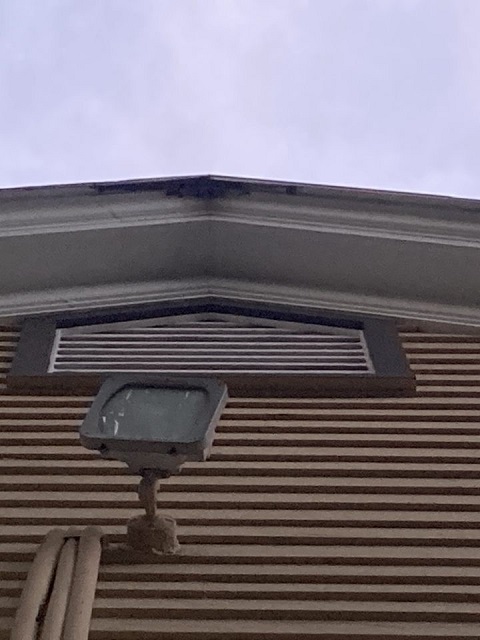
How to Get Rid of Bats in Your Roof
As bats lose their natural habitats to urban expansion, colonies move into human structures to roost. Bats in roofs are a common, and often frustrating, problem. Many species are able to squeeze through gaps less than an inch wide. Any hole, crack, or crevice they can wiggle into becomes an entry point for bats in roofs.
Common roosting sites include:
- Gable vents with torn screens
- Eaves and soffits
- Dormers and chimneys
- Areas under broken shingles
- Spaces behind gutters
Signs of Bats in Roofs

Once a bat colony moves into a house, it leaves some telltale clues. Regularly checking home exteriors for these signs is a great way to catch bats in roofs earlier rather than later. Check rooflines and spots behind downspouts or gutters for rub marks. Bats leave stains from the oil and dust in their fur as they fly in and out.
Guano is another strong sign of bats in a roof. If you find areas with stains or gaps large enough to admit a bat, look at the ground directly under these entry points. Any accumulation of bat droppings below these spaces is cause for concern.
Have bats in the chimney?
Find a Critter Control near you
Excluding Bats in Roofs
Residents who want to remove a bat colony from their property need to be careful. Some rare bat species have legal protections to keep people from moving or harming them. Excluding bats in roofs during their breeding season is also illegal in many areas, for good reason.
Until juvenile bats learn to fly, they are dependent on their mothers. When homeowners block off the entrance to a roost, female bats are unable to reenter and their trapped offspring cannot survive. To navigate issues with these animals, call the wildlife experts at Critter Control. Our team has safe, humane solutions for the removal of roosting bats in roofs.
Learn more about bat removal.
Get them out.
Keep them out.®
Experiencing a wildlife or pest issue? We can help! Complete this form and your local Critter Control® office will contact you to assist.
- Baby Bats
- Bat Bites
- Bat Facts & Myths
- Bat Guano – Identification & Removal
- Bat Deterrents
- Bat Diet & Feeding Schedule
- Bat Maternity Season
- Bats & Rabies
- Bats in Attic Removal
- Bats in Chimneys
- How to Identify & Remove Bats in Trees
- Bats in Walls
- How to Get Rid of Bats in Attic
- Watch How Bat Removal Works
- Do Bats Hibernate?
- Types of Bats
- What Sounds Do Bats Make?
- What Does a Bat Look Like?
- Bat Habitats and Infestations
- Bat Blindness & Echolocation